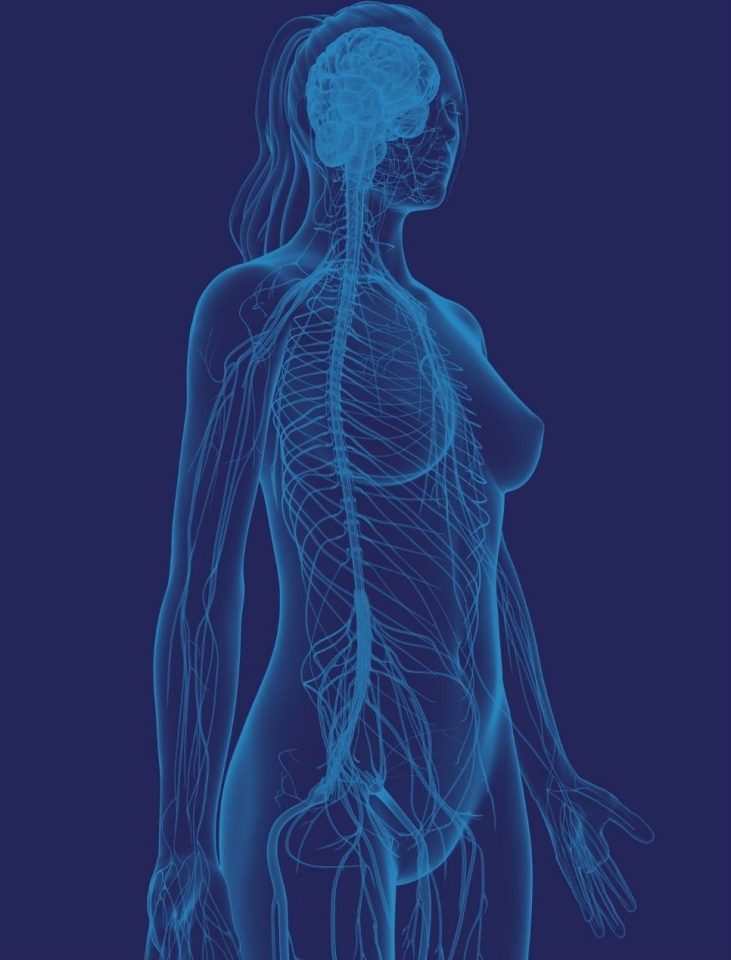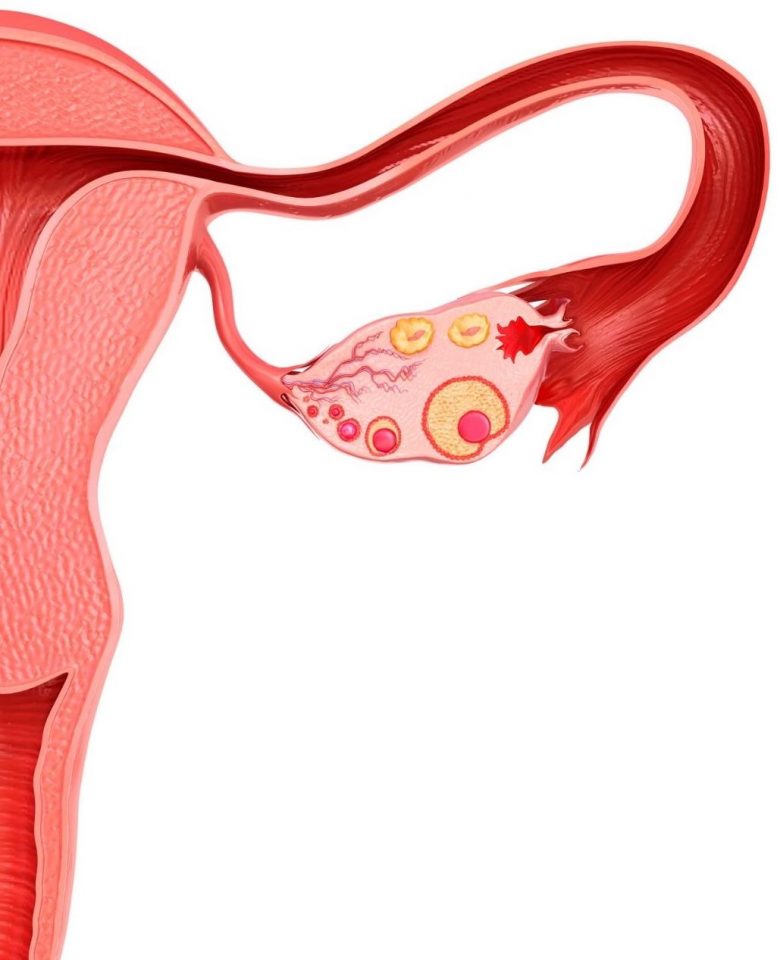
Deep Dyspareunia and Central Sensitization
The purpose of this study is to explore the role of psychological factors and central sensitization in deep dyspareunia in women with endometriosis. Participants complete history, pain, psycho-social and quality of life questionnaires as well as quantitative sensory testing using an algometer to measure pain pressure threshold. The hypothesis suggests that an increase in central sensitization will be associated with more severe deep dyspareunia. This may help identify women for whom standard hormonal or surgical treatment of endometriosis is not sufficient, and who may respond to multidisciplinary care.

Hysterectomy for endometriosis with or without ovarian preservation in BC: surgical outcomes over 7 years
Hysterectomy with or without removal of one or both ovaries, is commonly performed as definitive surgical management. Given that endometriosis lesions are stimulated by ovarian hormones, removal of both ovaries is often performed as a permanent form of hormonal suppression. However, there can be morbidity associated with BSO such as increased risk of cardiovascular events, osteoporosis, and symptoms of surgical menopause. Research question: Do women undergoing hysterectomy and removal of both ovaries experience lower re-operation rates for endometriosis related pain, compared to women undergoing hysterectomy with ovarian preservation? Methods: We will utilize PopData BC data, which is already available to our group, to assemble a population-based cohort including all women who underwent hysterectomy in BC between 1985 and 2016 for endometriosis. Using Cox proportional hazards models, we will compare women undergoing hysterectomy with BSO and women undergoing hysterectomy with ovarian preservation according to their post-surgical outcomes.

Outcomes following surgical management of pelvic pain : a prospective cohort study
Though endometriosis is diagnosed by laparoscopy, surgery is reserved for those who have failed first line treatment. Surgical options include conservative management with destruction or cutting of endometriosis lesions and definitive surgery with removal of the uterus, fallopian tubes, and/or ovaries. There is a lack of studies examining surgical outcomes at an interdisciplinary centre. Our research aims to address these deficits in a two part-study. The first part will evaluate the impact on surgery on pelvic pain. Specifically, we will examine the influence of the following factors: (1) stage of endometriosis, (2) definitive vs. conservative surgery, (3) diagnosis of endometriosis vs. no endometriosis, and (4) definitive surgery in those under age 35 vs. over age 35. In the second part, we will examine the literature for the impact of removing the ovaries on pelvic pain in the context of both conservative and definitive surgery. For the second part, we will complete a systematic review and meta-analysis evaluating the impact of removing the ovaries on pelvic pain and recurrence rates.

Perspectives of endometriosis-associated painful sex: Evidence to inform online resource development
Endometriosis is a common gynecological condition affecting one in 10 women and about half of these women have moderate-to-severe pain during and/or after sexual intercourse (dyspareunia) that affects their quality of life. The goal of this study is to understand how women respond to and manage dyspareunia due to endometriosis. Specifically we will ask people with endometriosis to tell us about their sexual pain and its management and give us feedback on an evidence-based website about endometriosis and painful sex. The interview data will be used to inform the development of additional online resources.

Pathways for diagnosis and management of endometriosis-associated deep dyspareunia:
The purpose of this study is to evaluate the acceptability and effectiveness of two tools that may help address the management of deep dyspareunia: 1) A phallus length reducer (PLR, brand name: Ohnut), consisting of interconnected silicone rings worn externally over the penetrating object allowing adjustable penetration depth. We hypothesize that the PLR will be acceptable to both patient and partner, and effective at reducing the patient’s self-reported severity of deep dyspareunia. 2) A vaginal insert for at home self-assessment of deep dyspareunia. We hypothesize that the vaginal insert test will be acceptable to patients and will yield results highly correlated with physical exam for deep dyspareunia. https://clinicaltrials.gov/ct2/show/NCT04370444

Endometriosis and painful sex: Piloting digital storytelling
Women with endometriosis commonly experience pain during sexual activity that negatively affects their quality of life and relationships. Recognizing that women seek health information online, the limited information specific to endometriosis and painful sex undermines their ability to understand and manage their symptoms and seek health care. With our patient partners, we will co-create Digital Stories in the form of written/audio narrations and videos about the impact of endometriosis-related painful sex and the ways in which women respond and manage. The aim of the proposed research is create Digital Stories and assess: i) the acceptability of the co-creation workshop process, ii) the emotional impact of workshop participation, iii) participant’s willingness to share their digital stories with broader audiences and iv) the impact of these stories on a broader audience . This research will enable us to refine the co-creation process and the focus of workshop evaluation specific to participant experiences, and to determine target audiences and means of disseminating this patient-perspective evidence in future research. Our ultimate goal is to develop an innovative and engaging way of creating and sharing information to empower women to live their best life while also combating stigma.

GRACE
Little is known about how Elagolix is used in the real -world setting for the treatment of women with endometriosis. This observational study will seek to describe treatment patterns, patient profile, disease type and healthcare resource utilization among women who are prescribed Elagolix as part of standard clinical practice.

Sexual Quality of Life
Dyspareunia is pain with penetration during sexual activity.1 Two common types of dyspareunia are superficial (pain upon initial entry of the vagina) and deep (pain associated with deep vaginal penetration). One of the main causes of deep dyspareunia is endometriosis, which is the growth of endometrial tissue outside of the uterus. Endometriosis is a chronic gynaecological disease that affects an estimated 10% of reproductive aged women.4,5 Deep dyspareunia may greatly impact the sexual quality-of-life (SQoL), such as sexual functioning or satisfaction, in women with endometriosis. Using data from 277 women in the Endometriosis Pelvic Pain Interdisciplinary Cohort (EPPIC) Data Registry, this study aims to determine if deep dyspareunia was associated with sexual quality-of-life in women with endometriosis independent of potential confounders.